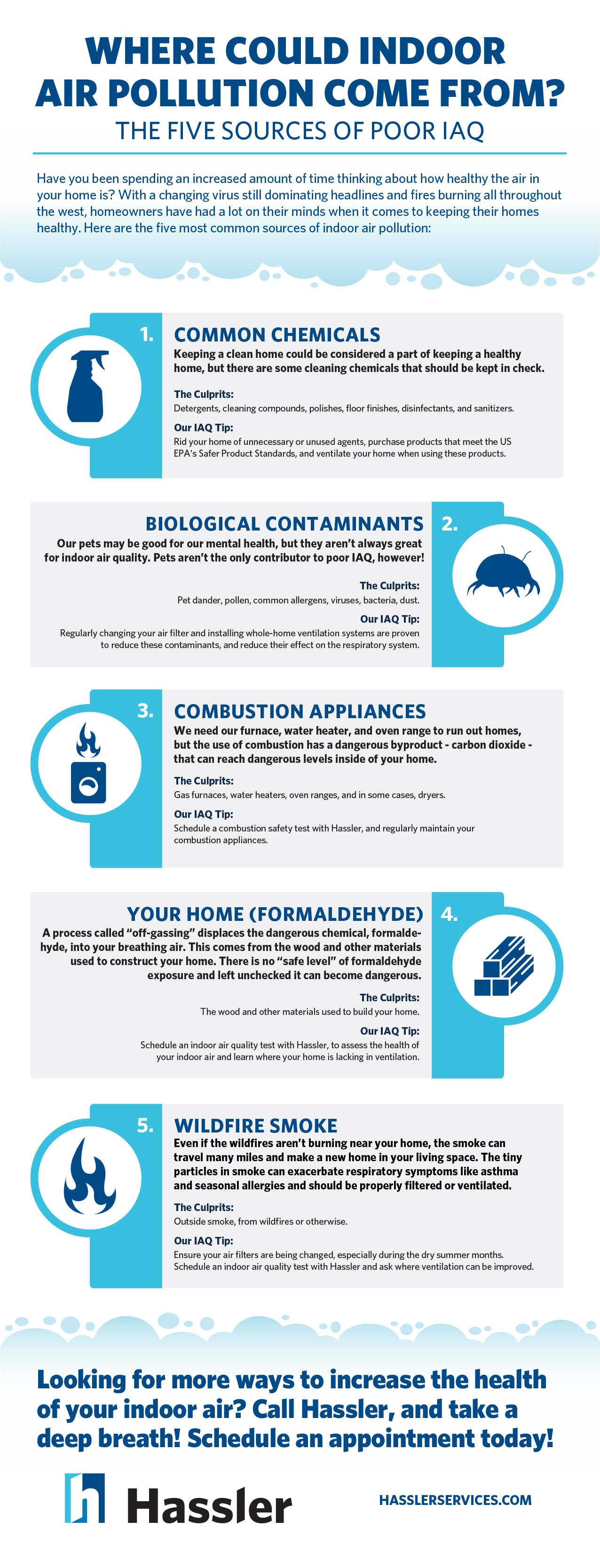Where Could Indoor Air Pollution Come From?
Have you been spending an increased amount of time thinking about how healthy the air in your home is? With a changing virus still dominating headlines and fires burning all throughout the west, homeowners have had a lot on their minds when it comes to keeping their homes healthy. Here are the five most common sources of indoor air pollution:

(View as Downloadable PDF)
Common Chemicals
Keeping a clean home could be considered a part of keeping a healthy home, but there are some cleaning chemicals that should be kept in check.
The Culprits: detergents, cleaning compounds, polishes, floor finishes, disinfectants, and sanitizers
Our IAQ Tip: Rid your home of unnecessary or unused agents, purchase products that meet the US EPA's Safer Product Standards, and ventilate your home when using these products.
Biological Contaminants
Our pets may be good for our mental health, but they aren’t always great for indoor air quality. Pets aren’t the only contributor to poor IAQ, however!
The Culprits: pet dander, pollen, common allergens, viruses, bacteria, dust
Our IAQ Tip: Regularly changing your air filter and installing whole-home ventilation systems are proven to reduce these contaminants, and reduce their effect on the respiratory system.
Combustion Appliances
We need our furnace, water heater, and oven range to run out homes, but the use of combustion has a dangerous byproduct - carbon dioxide - that can reach dangerous levels inside of your home.
The Culprits: Gas furnaces, water heaters, oven ranges, and in some cases, dryers.
Our IAQ Tip: Schedule a combustion safety test with Hassler, and regularly maintain your combustion appliances.
Your Home (Formaldehyde)
A process called “off-gassing” displaces the dangerous chemical, formaldehyde, into your breathing air. This comes from the wood and other materials used to construct your home. There is no “safe level” of formaldehyde exposure and left unchecked it can become dangerous.
The Culprits: The wood and other materials used to build your home
Our IAQ Tip: Schedule an indoor air quality test with Hassler, to assess the health of your indoor air and learn where your home is lacking in ventilation.
Wildfire Smoke
Even if the wildfires aren’t burning near your home, the smoke can travel many miles and make a new home in your living space. The tiny particles in smoke can exacerbate respiratory symptoms like asthma and seasonal allergies and should be properly filtered or ventilated.
The Culprits: Outside smoke, from wildfires or otherwise.
Our IAQ Tip: Ensure your air filters are being changed, especially during the dry summer months. Schedule an indoor air quality test with Hassler and ask where ventilation can be improved.
